
- INTRODUCING YOU TO NARA – THEN AND NOW
- TODAIJI TEMPLE – UNESCO WORLD HERITAGE SITE- HOME TO THE WORLD’S LARGEST BRONZE STATUE
- KASUGA TAISHA SHRINE – UNESCO WORLD HERITAGE SITE – BEAUTIFUL SHINTO SHRINE ADORNED WITH HUNDREDS OF STONE LANTERNS
- KOFUKUJI TEMPLE – FIVE-STORY PAGODA
- NARA PARK – HISTORICAL SIGNIFICANCE OF THE DEER
- DEER – A MAJOR TOURIST ATTRACTION
- SOME PRECAUTIONS – RESPECT THE DEER
- WHAT FOOD TO TRY IN NARA
- WHERE AND WHAT? SOUVENIRS FROM NARA
- HOW TO NAVIGATE NARA
- CONCLUSION – REASONS WHY YOU HAVE TO VISIT NARA
INTRODUCING YOU TO NARA – THEN AND NOW
Nara, located in the Kansai region of Japan, is a city steeped in history and culture. It is renowned for its ancient temples, shrines, and traditional Japanese gardens. It was the capital of Japan from 710 to 794, during the Nara period, and as a result, is home to many important historical landmarks. Remnants of its imperial past can be seen in the form of the ancient Imperial Palace and the Heijo Palace. It is also home to some of the most important and oldest temples and shrines in the country. These religious sites have not only served as places of worship, but also as centers for community gatherings, political activities, and cultural events. The architecture and spiritual significance of these temples and shrines have been carefully preserved over the centuries, reflecting the deep reverence for tradition and spirituality in Nara. Nara’s history as the first permanent capital of Japan has left an indelible mark on the city, making it a must-visit destination for anyone interested in Japan’s ancient past.
Many of the sites such as Todaiji Temple and Kasuga Shrine, have been designated as UNESCO World Heritage Sites, attracting thousands of visitors from around the world. The presence of these sacred places has helped shape Nara’s identity and foster a sense of cultural and historical pride among its residents. Furthermore, the annual festivals and rituals held at these temples and shrines continue to be an integral part of Nara’s cultural heritage, connecting the present generation to the ancient customs and beliefs of their ancestors.
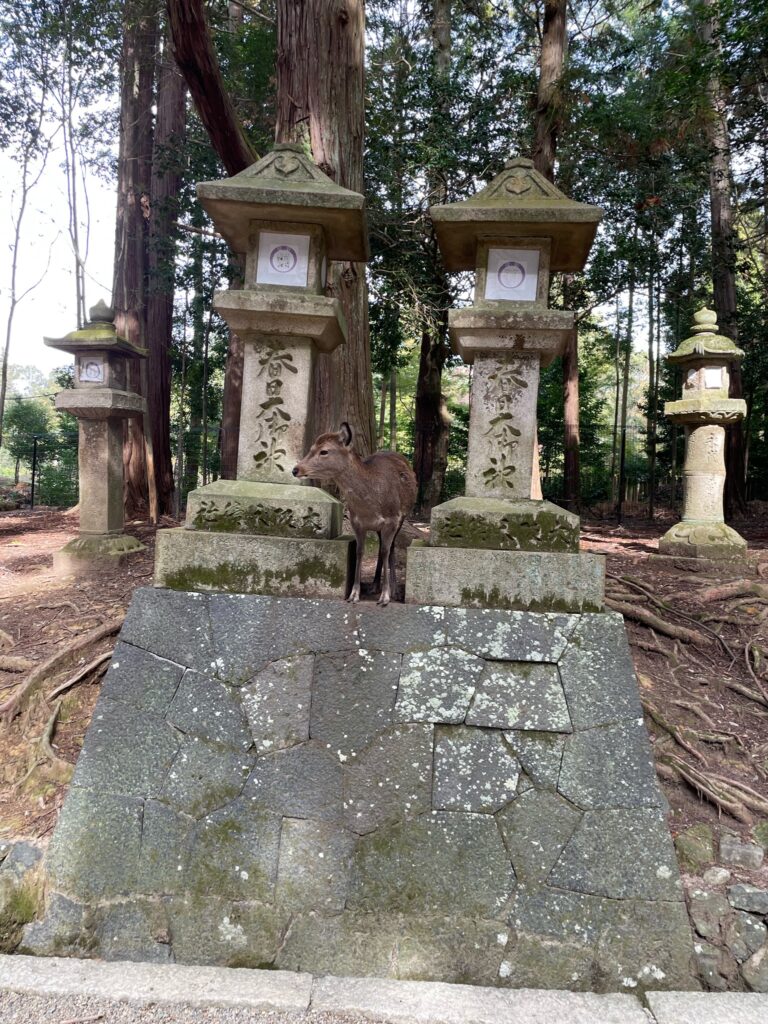
TODAIJI TEMPLE – UNESCO WORLD HERITAGE SITE- HOME TO THE WORLD’S LARGEST BRONZE STATUE
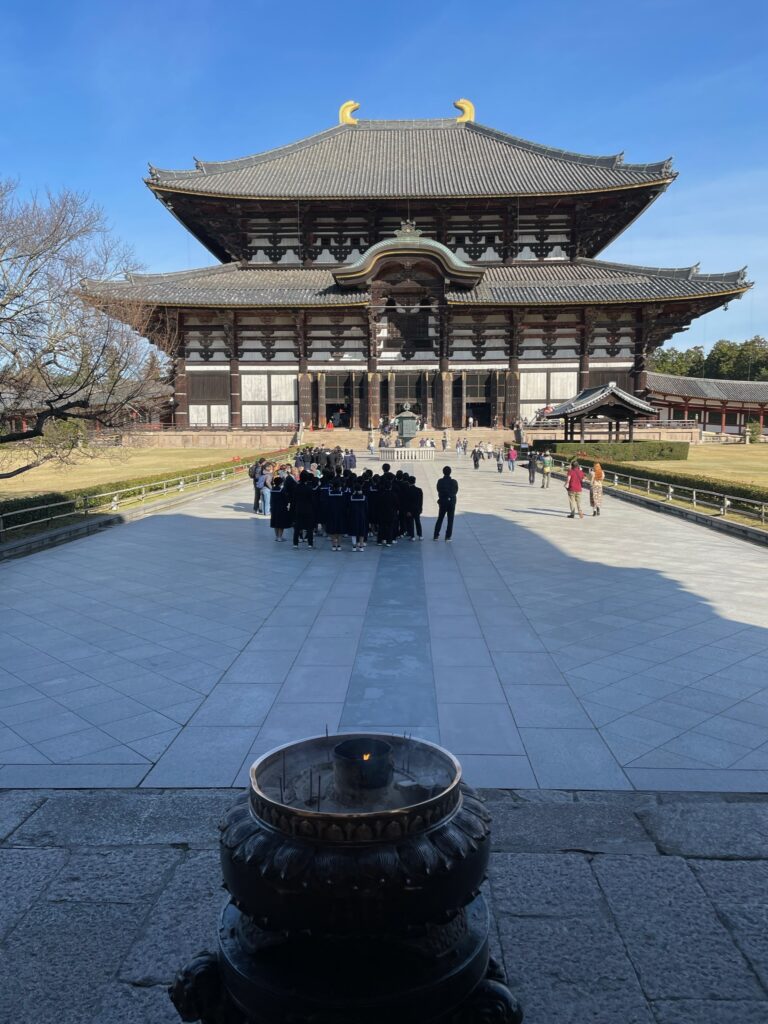
Todaiji Temple in Nara, Japan is home to the Great Buddha, a monumental bronze statue that stands at over 50 feet tall. The Great Buddha, known as Daibutsu, is a representation of Vairocana, the cosmic Buddha, and is an awe-inspiring sight to behold.

The temple complex, first established in the 8th century, is one of the most important and historic in Japan, housing numerous national treasures and cultural artifacts. The statue is housed in the Daibutsuden, or Great Buddha Hall, which is the largest wooden structure in the world. Visitors can enter the hall and stand in front of the Great Buddha, experiencing the sheer magnitude and serenity of the statue. Todaiji Temple and the Great Buddha are important symbols of Japanese Buddhism and a must-see attraction for tourists seeking a deeper understanding of Japan’s cultural and religious heritage.
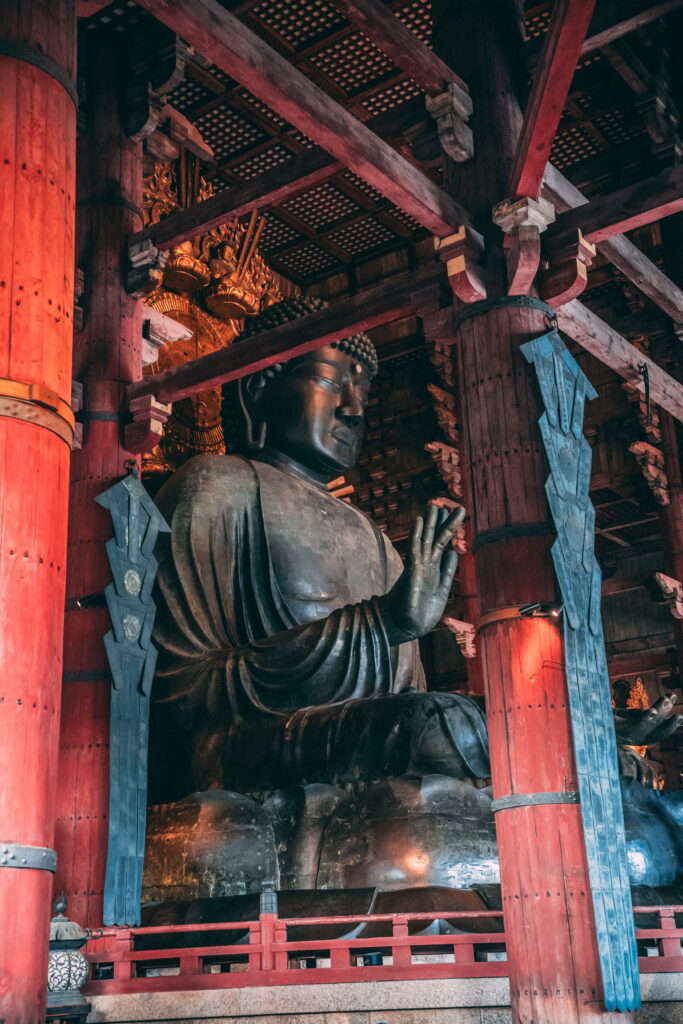
KASUGA TAISHA SHRINE – UNESCO WORLD HERITAGE SITE – BEAUTIFUL SHINTO SHRINE ADORNED WITH HUNDREDS OF STONE LANTERNS

Kasuga Taisha Shrine in Nara is a beautiful and historically significant site in Japan. This Shinto shrine has a long history dating back to the 8th century and is dedicated to the deity responsible for protecting the city of Nara. The shrine is known for its striking vermilion buildings and is surrounded by a serene forest filled with thousands of stone lanterns, creating a magical atmosphere. The shrine is also famous for its deer, which are considered sacred and roam freely around the site. The Kasuga Taisha Shrine is also known for its role in the Shinto religion, as it was a place of worship for the powerful Fujiwara clan. Visitors can explore the shrine’s impressive architecture, learn about its history and significance, accompanied by the deer along the lantern-lined path to the shrine.
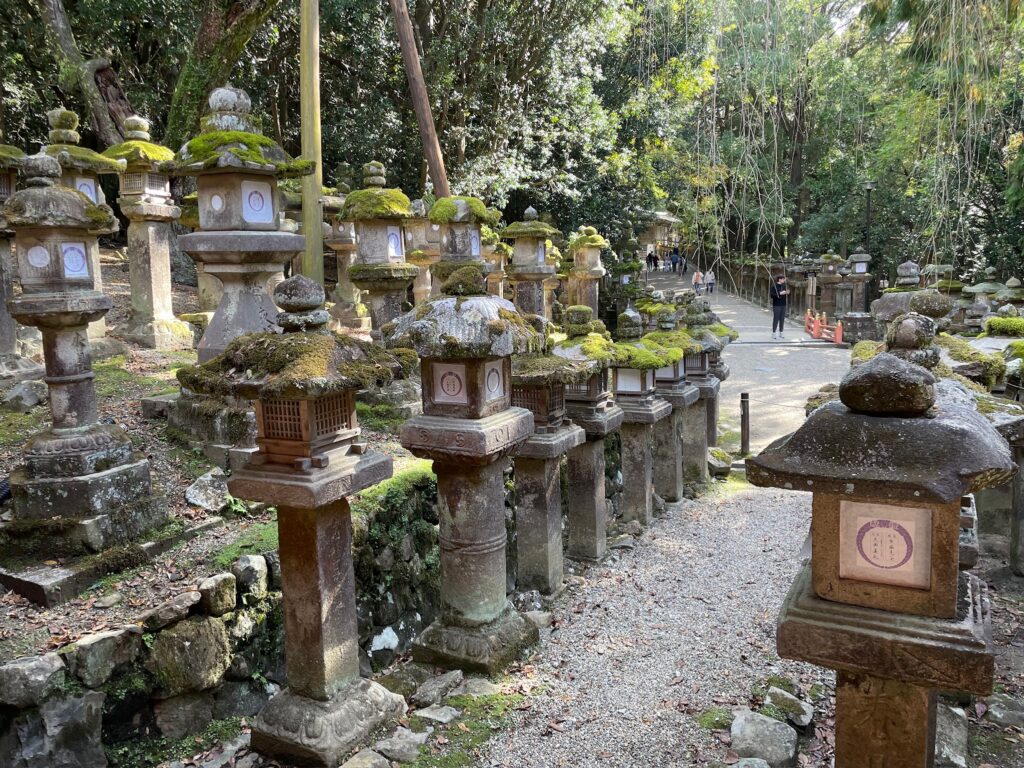
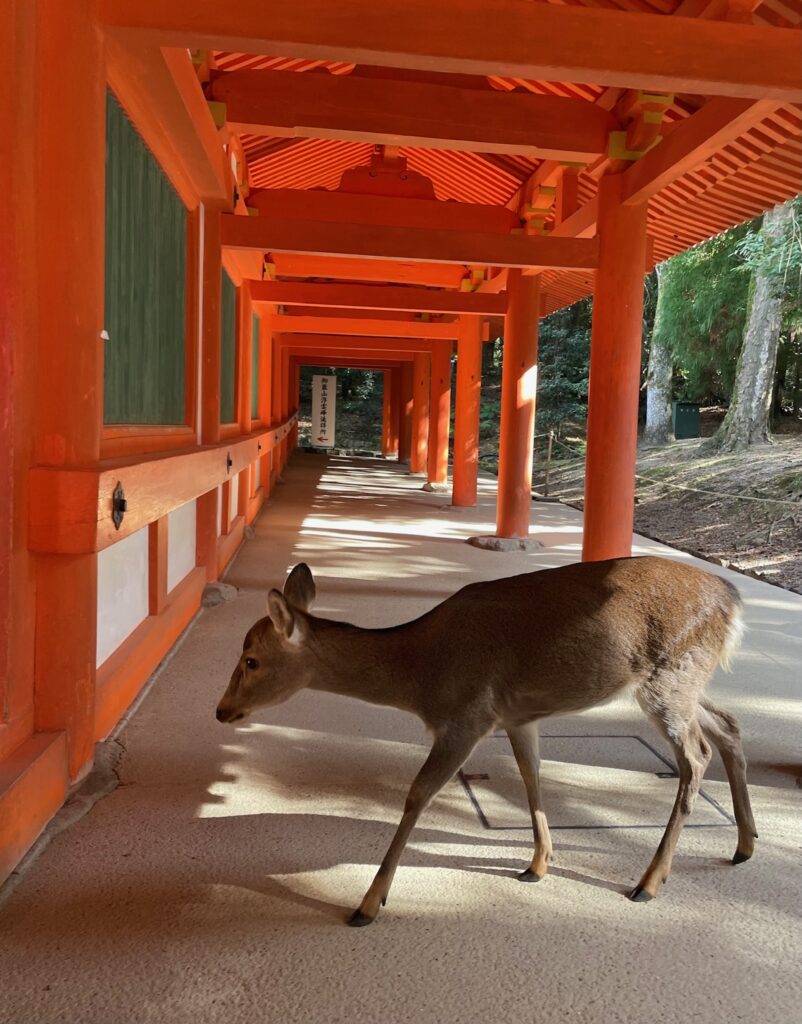
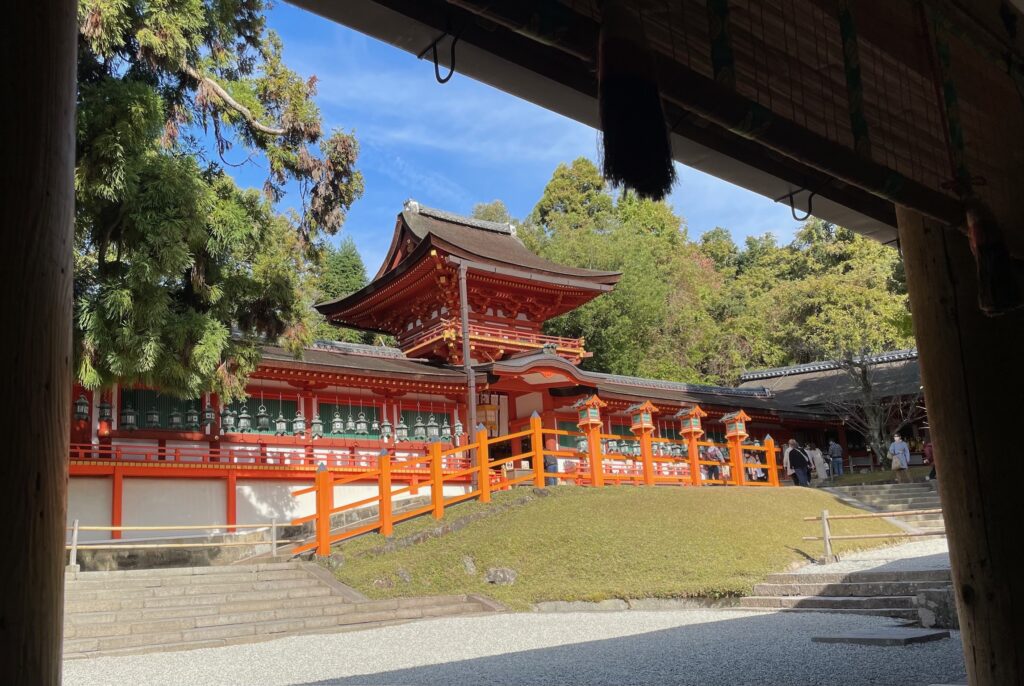
KOFUKUJI TEMPLE – FIVE-STORY PAGODA
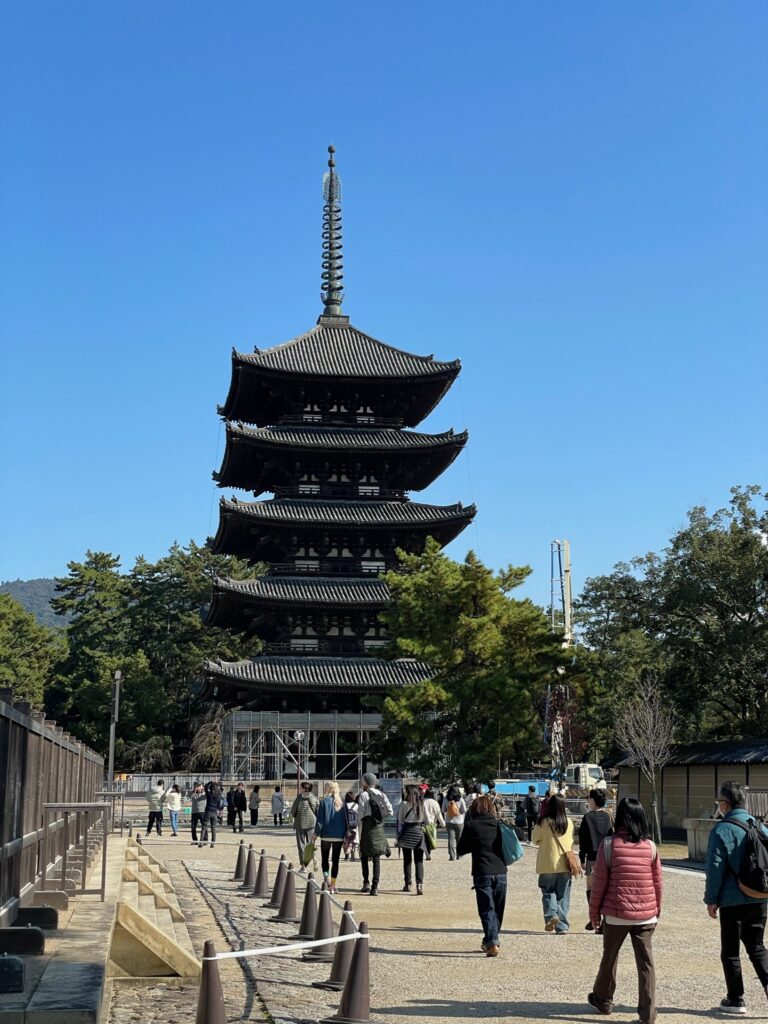
Kofukuji Temple in Nara is one of the oldest and most prestigious Buddhist temples in Japan. Founded in 669 by the powerful Fujiwara family, Kofukuji has a rich history and is a designated UNESCO World Heritage site. The temple complex is known for its impressive architecture, including the towering five-story pagoda which is one of the tallest in Japan. The temple also houses a treasure house containing important Buddhist artworks and artifacts, including ancient statues and scrolls. Kofukuji is also famous for its beautiful garden, which features a large pond and picturesque landscapes. The temple is an important cultural and religious center in Nara, and it continues to attract visitors from all over the world who come to admire its beauty and learn about its significant historical and spiritual importance.

NARA PARK – HISTORICAL SIGNIFICANCE OF THE DEER
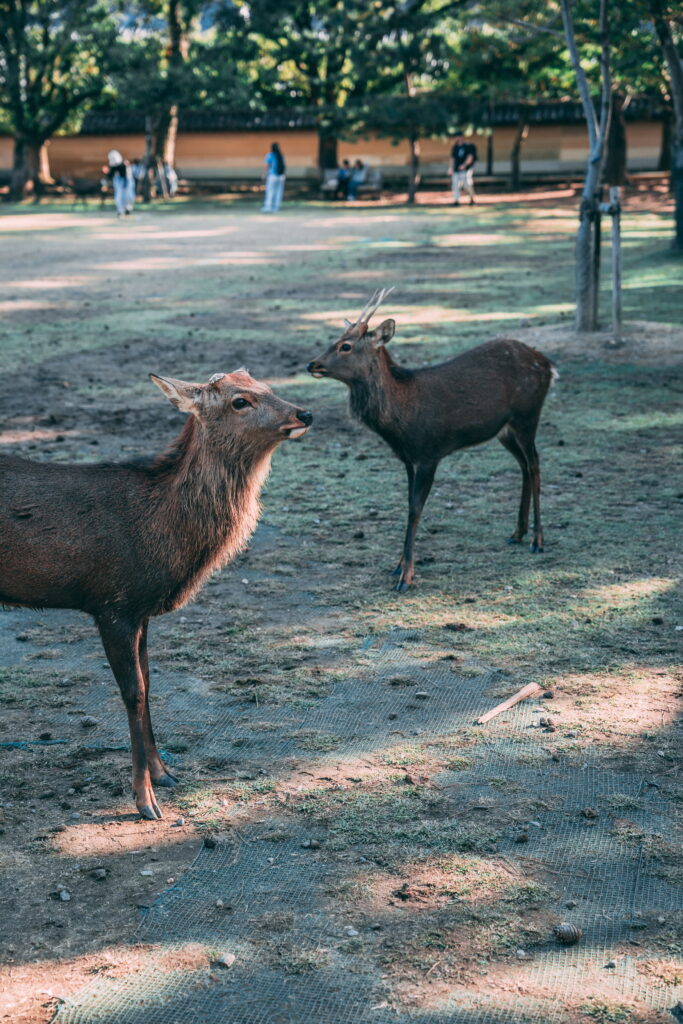
Nara Park, located in the city of Nara, is famous for its large population of freely roaming sika deer. These deer have become a symbol of the city and are considered sacred according to the Shinto religion. The history of the deer in Nara Park dates back over 1,300 years, when the deer were first considered divine and were protected as such. The legend goes that Takemikazuchi, a Shinto god, arrived in Nara on a white deer to guard the newly built capital of Heijo-kyo. Ever since, the deer have been regarded as sacred and have been protected in the park. Visitors to Nara Park can observe and interact with the deer up close, as they have become quite tame and are accustomed to human presence.
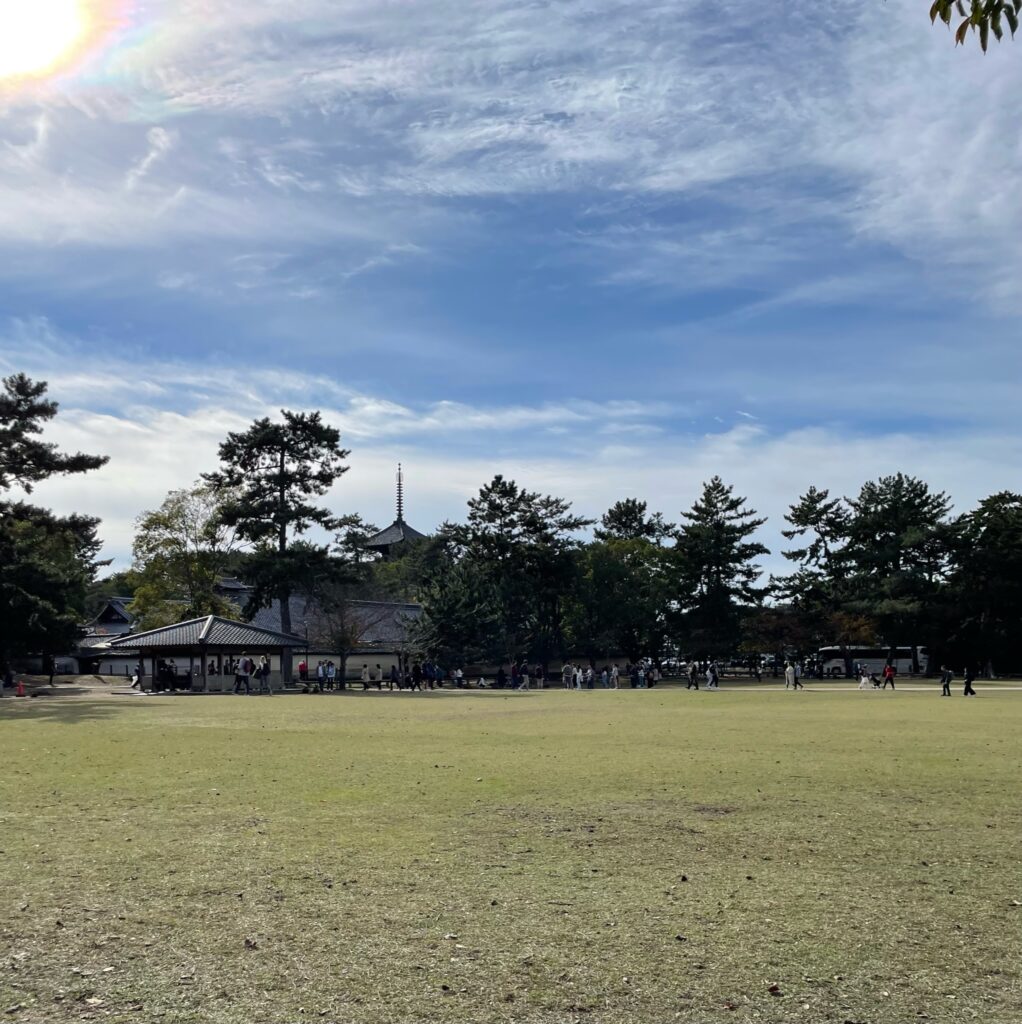
DEER – A MAJOR TOURIST ATTRACTION
The park is home to over 1,000 free-roaming deer, and the presence of the deer adds to the charm and historical significance of Nara Park. Visitors can purchase special deer crackers to feed the deer, and the animals have become quite accustomed to approaching people in search of food. The deer are also known for bowing to visitors, a behavior they have learned from being fed by tourists. The park itself is also a beautiful and serene place, with stunning cherry blossoms in the spring and colorful foliage in the fall. It is a must-visit destination for nature and animal lovers. We enjoyed interacting with the deer immensely and ended up staying a few hours at the park to feed and “converse” with the deer. We felt they were trying to communicate with us with their big, beautiful eyes.
SOME PRECAUTIONS – RESPECT THE DEER
Feeding the deer is a popular activity, and special deer crackers can be purchased around the park to feed these friendly animals. Do not feed deer with processed foods or human snacks, as these can be harmful to their health. When photographing and feeding deer, it’s important to prioritize safety for both yourself and the animals. When taking photos, keep a safe distance from the deer to avoid startling or provoke them. Approach them slowly and avoid making sudden movements or loud noises. Never approach fawns or young deer, as their mothers may become defensive and protective. It’s also important to respect the natural behaviors and boundaries of the deer, and to never attempt to touch or pet them. By following these safety tips, you can enjoy photographing and interacting with deer while also ensuring their well-being.
When I went to visit Todaiji temple early in the morning to avoid the crowds, a hungry deer mistook the entrance ticket for a deer cracker and hungrily tried to devour the ticket. By gripping the ticket in my hand, I was able to save one half of the ticket! When I showed the half-eaten ticket to the attendant at the temple entrance she laughed it off as something that happened on a daily basis.
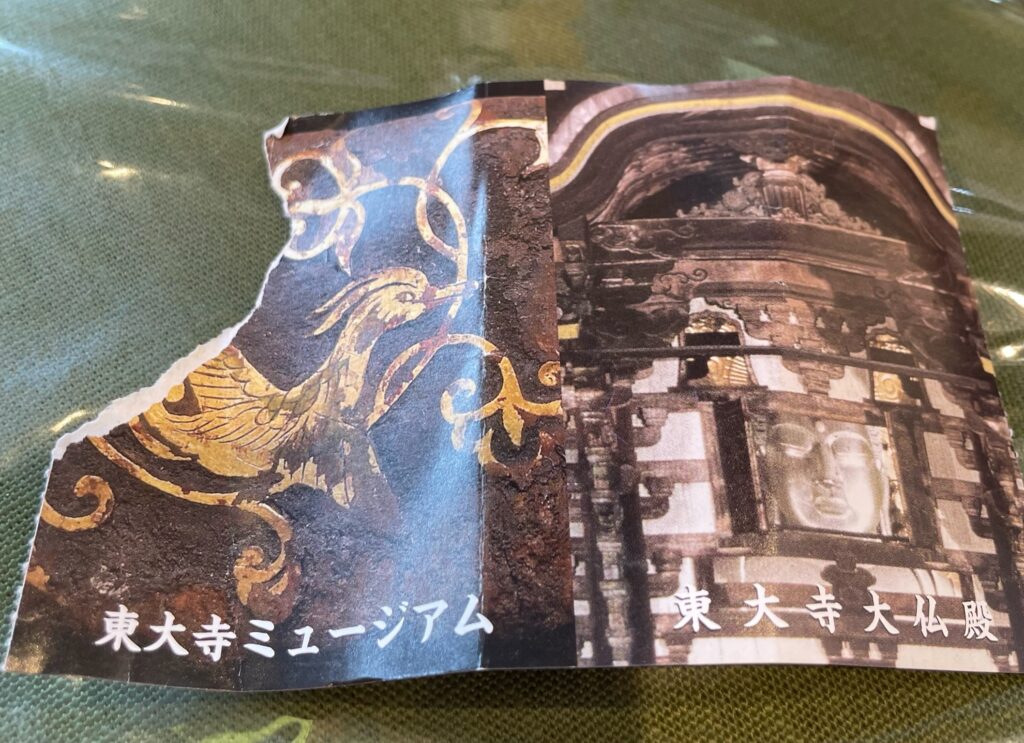
WHAT FOOD TO TRY IN NARA
Try some of Nara’s local specialties, such as kakinoha sushi, which is sushi wrapped in persimmon leaves, miwa somen, a type of thin wheat noodle that is a specialty of Nara Prefecture or “Cha-gayu” which is rice cooked in green tea. They’re all healthy food and worth a try. Nara is known for its sake, so be sure to pair your meal with this delicious rice wine when you go to a local restaurant. Another specialty of Nara is “Nara-zuke”. To make nara-zuke, numerous kinds of vegetables and fruits are immersed in salt and sake yeast. The result is an amber-colored pickle rich with the scent of sake. It is popular because it has a great range as a complement to rice, meat, vegetables, and snacks. The restaurants will probably serve “nara-zuke” as a side dish to your mail.
WHERE AND WHAT? SOUVENIRS FROM NARA
If you are looking for souvenirs to bring home, GOTO-CHI, right in front of the East gate of Kintetsu Nara station carries a wide range of products at reasonable prices. You can get souvenirs such as Nara cotton handkerchiefs embroidered with temple and deer designs, torii gate and temple magnets, and charming Nara deer earrings! A can of cookies with the Nara mascot deer character “Shikamaro-kun” on the can also makes for an adorable souvenir.
The “Nara Meihinkan Nara Park Bus Terminal Store” near the Nara Prefectural office, across Nara Park, is also a great place to shop for souvenirs. They sell Nara’s specialty products, traditional crafts, local confectionery and persimmon leaf sushi. If you need to take a break from all the souvenir shopping in one wing of the building, on the 2F of the other wing is a very attractive Starbucks which overlooks Nara Park. The coffee here tasted especially good maybe because the store exudes a serene ambience.
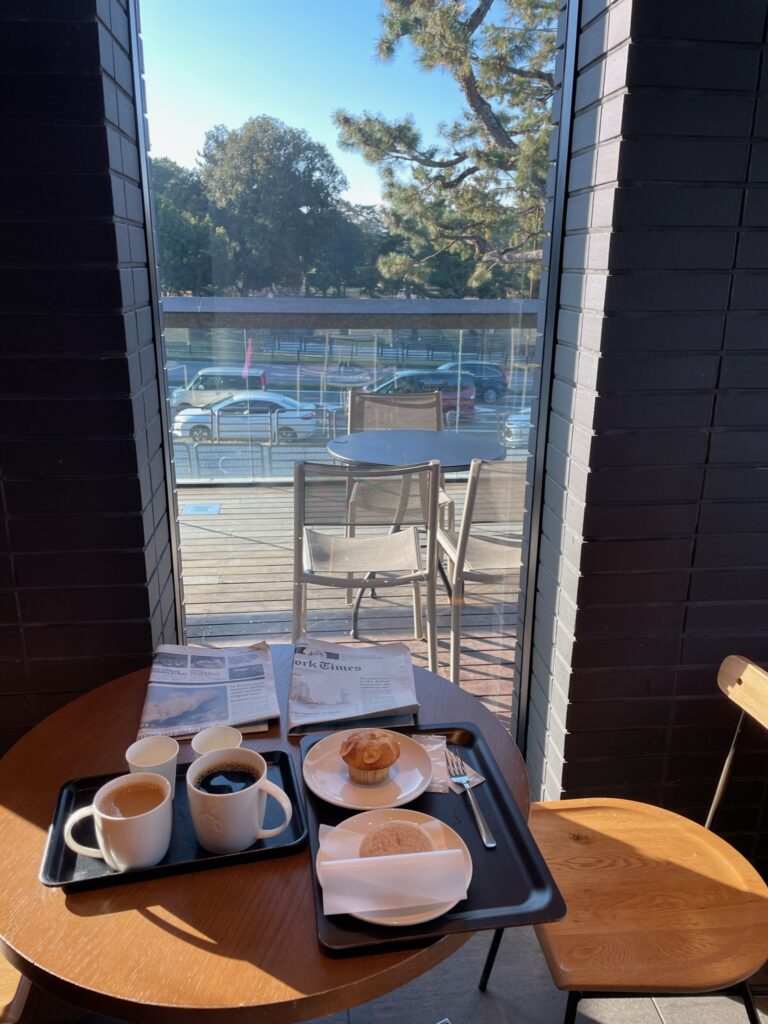
HOW TO NAVIGATE NARA
When visiting Nara, there are several ways to get around and explore this historic city. One convenient option is to use the city’s extensive public transportation system, which includes buses and trains. The Nara Kotsu bus network covers all the major sights and attractions in the city, making it easy for visitors to hop on and off at their leisure. Another popular mode of transportation in Nara is renting a bicycle. With its flat terrain and numerous bike lanes, Nara is an ideal city for cycling, and there are plenty of rental shops to choose from. Many of the city’s main attractions are also within walking distance of each other, so taking a leisurely stroll through the historic streets and parks is also a great way to get around. Of course, guided tours offer a unique way to explore Nara with the help of a knowledgeable local guide. Overall, getting around Nara is easy and convenient, no matter which mode of transportation you choose.
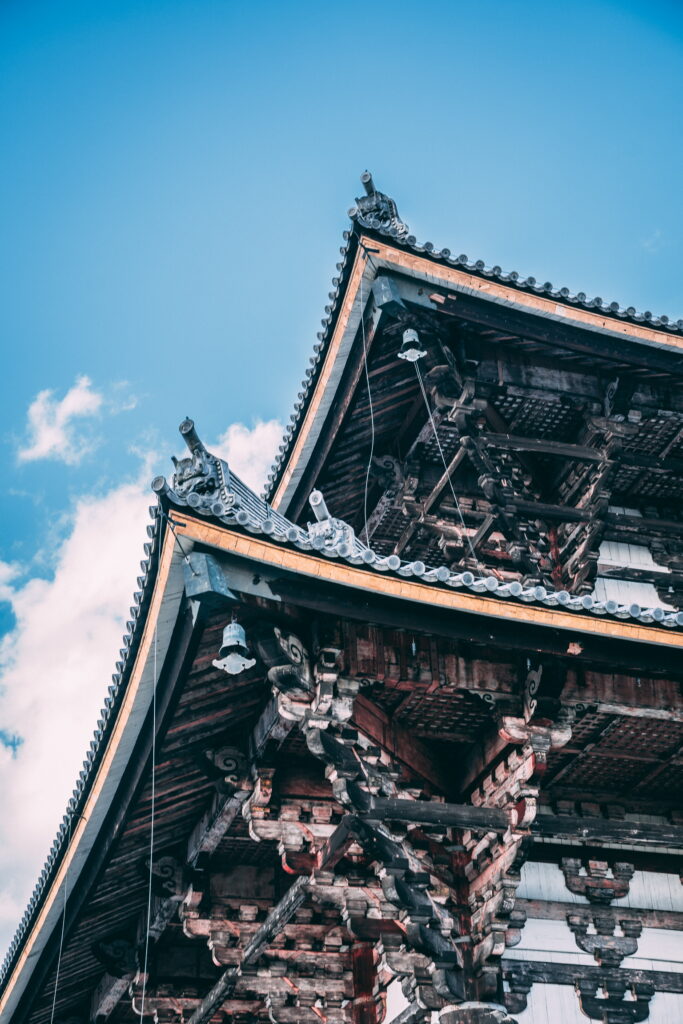
CONCLUSION – REASONS WHY YOU HAVE TO VISIT NARA
Nara is a city steeped in history and culture, and it offers some of the country’s most iconic attractions. From the majestic Todai-ji Temple, which houses the world’s largest bronze statue of Buddha, to the ancient Kasuga Taisha Shrine with its thousands of stone lanterns, Nara is a treasure trove of awe-inspiring landmarks. The friendly deer roaming freely in Nara Park and holding a special place in the history and culture of the city are also great attractions. Nara provides an unforgettable experience for travelers seeking to connect with Japan’s rich cultural heritage, well-preserved architecture, and tranquil natural beauty. I highly encourage everyone to plan a trip to Nara. Start planning your trip to Nara today!
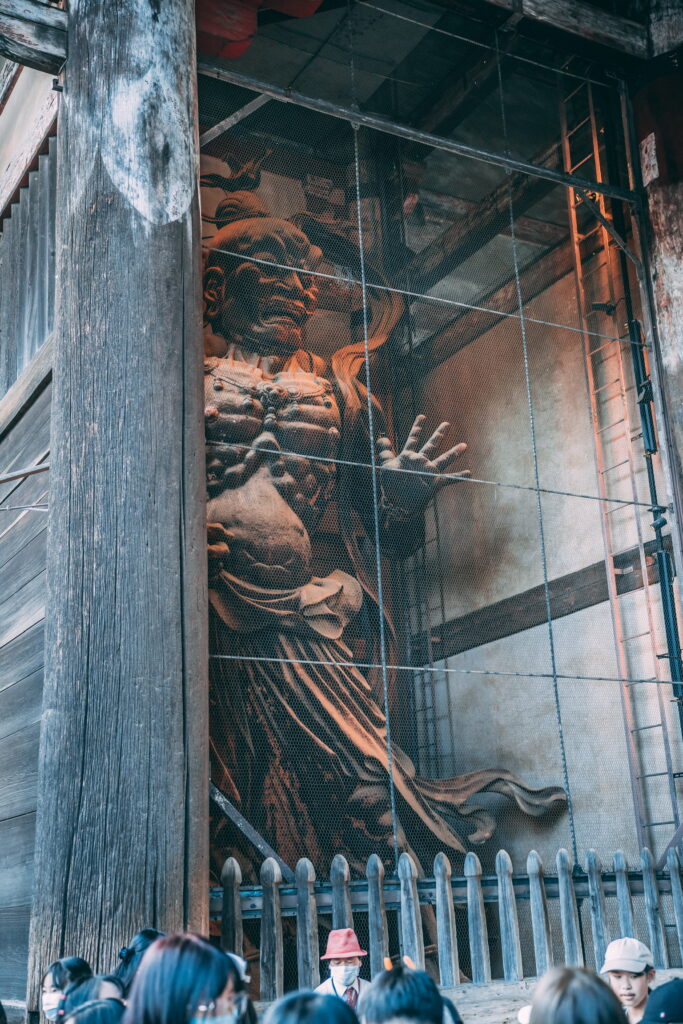
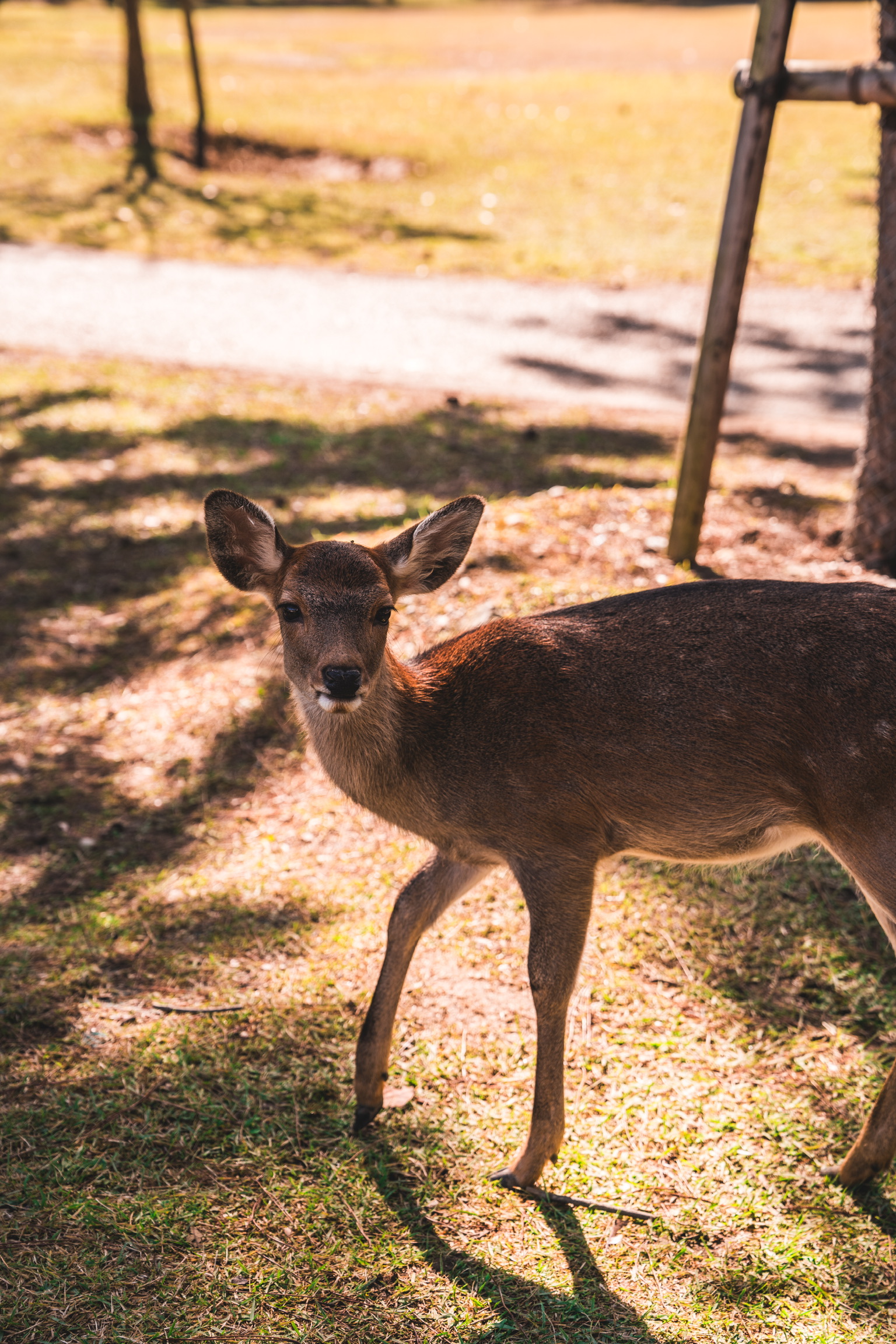
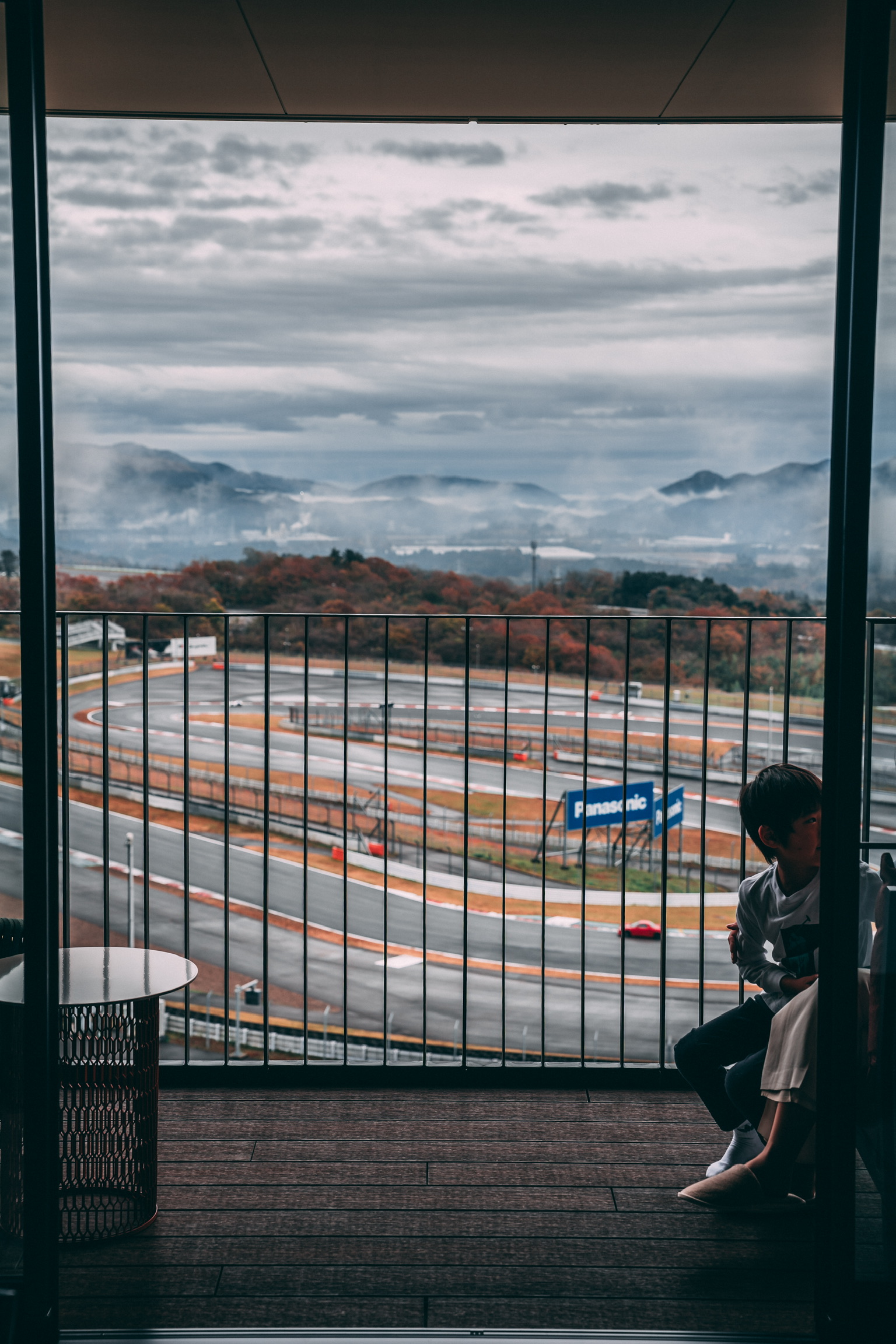
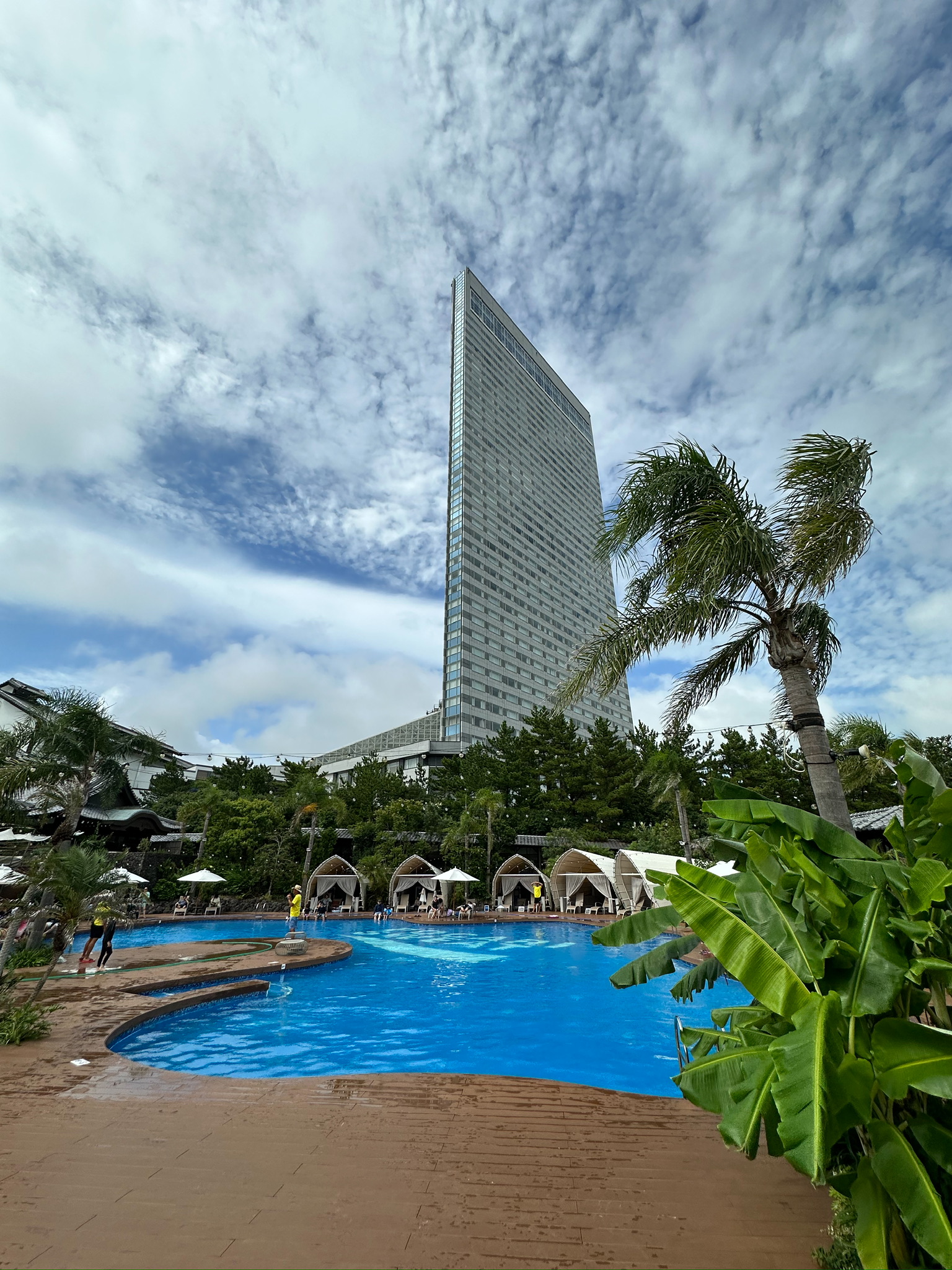
コメント
It’s perfect time to make some plans for the future and it is time
to be happy. I have read this post and if I could I want to suggest you some interesting things or suggestions.
Maybe you can write next articles referring to this article.
I wish to read more things about it!
I have been browsing online more than three hours today, yet I never found any interesting article like
yours. It is pretty worth enough for me.
In my view, if all website owners and bloggers made good
content as you did, the internet will be a lot more useful than ever before.